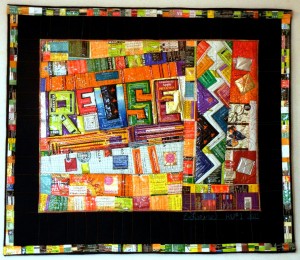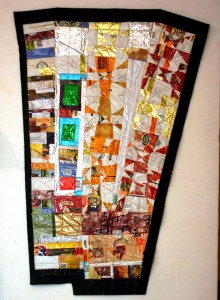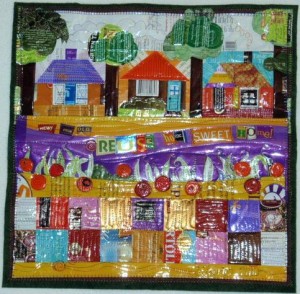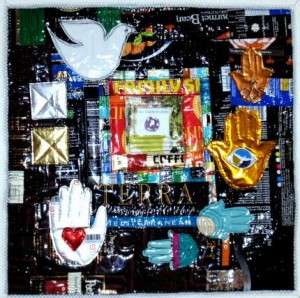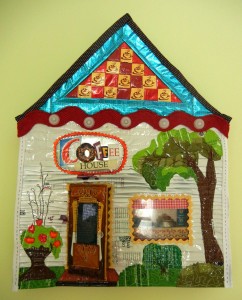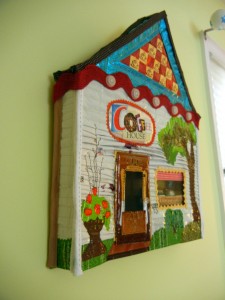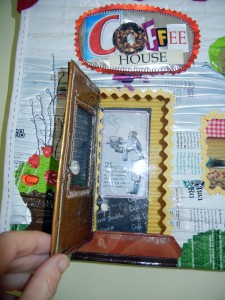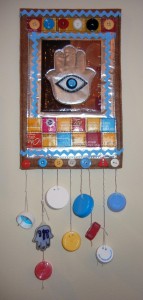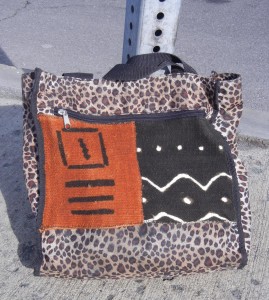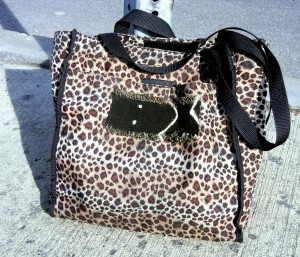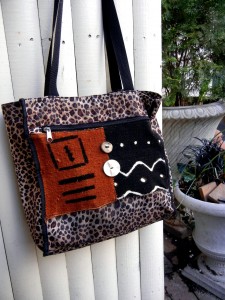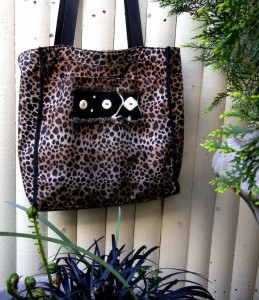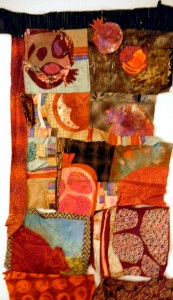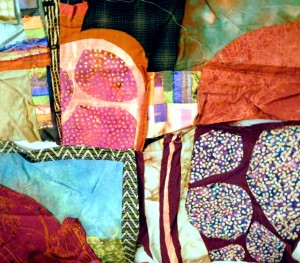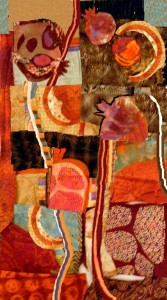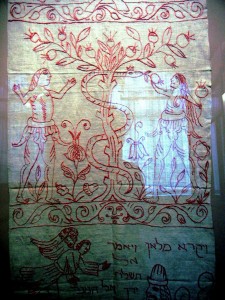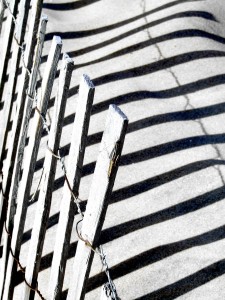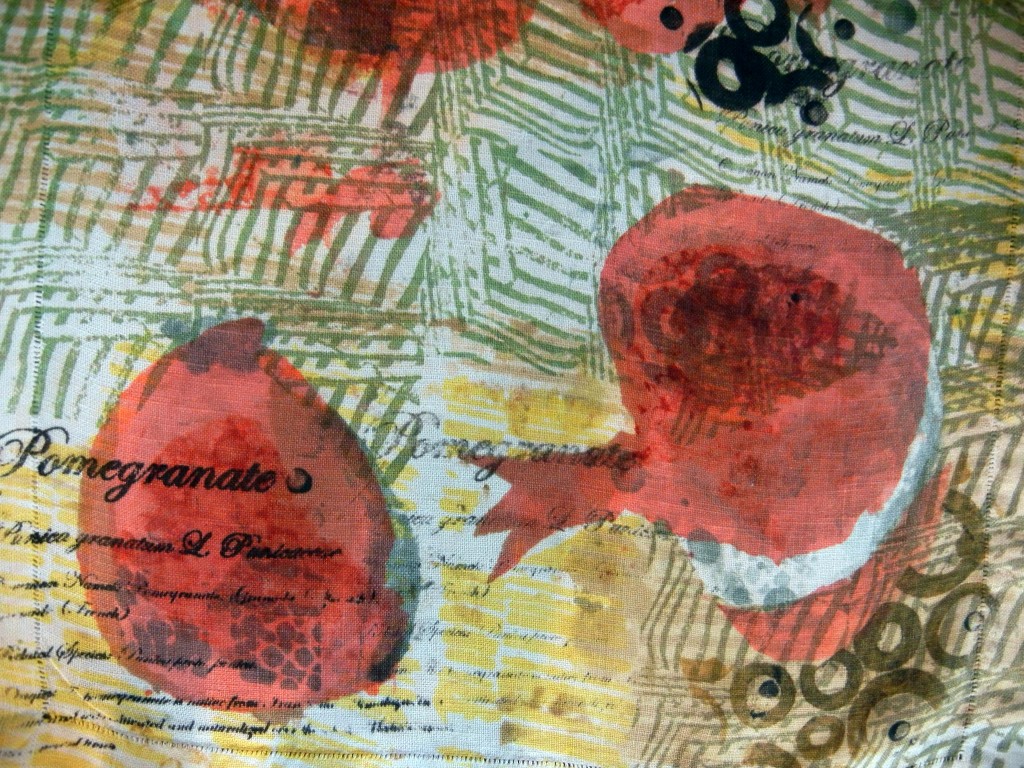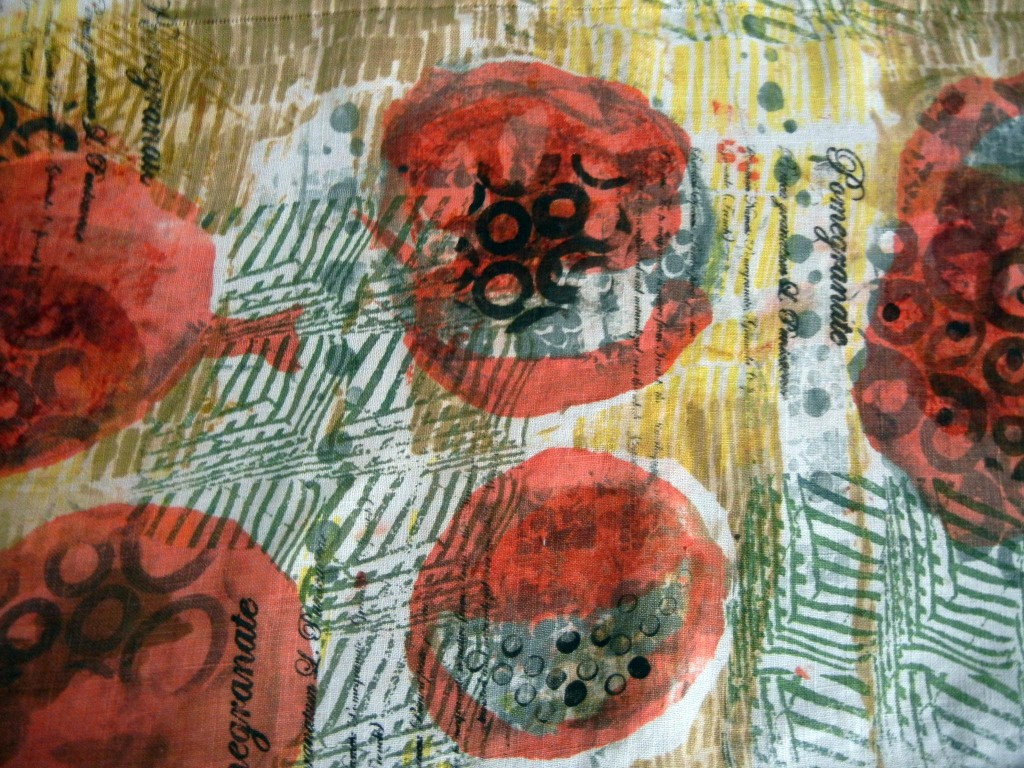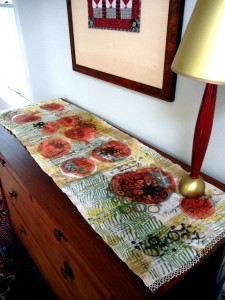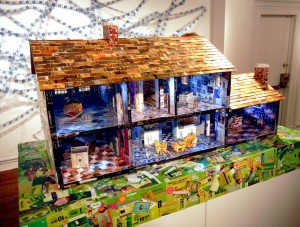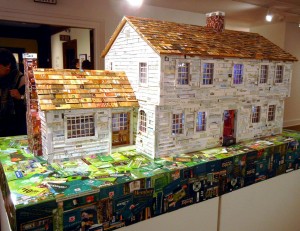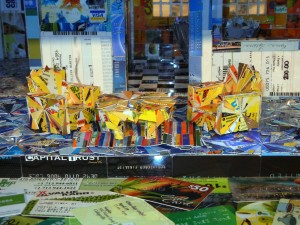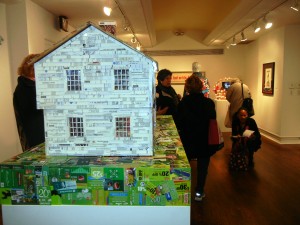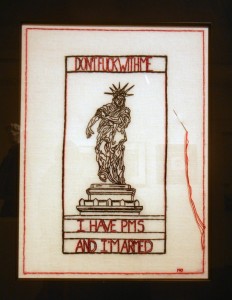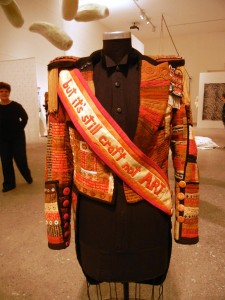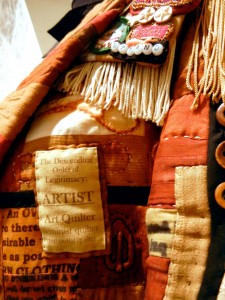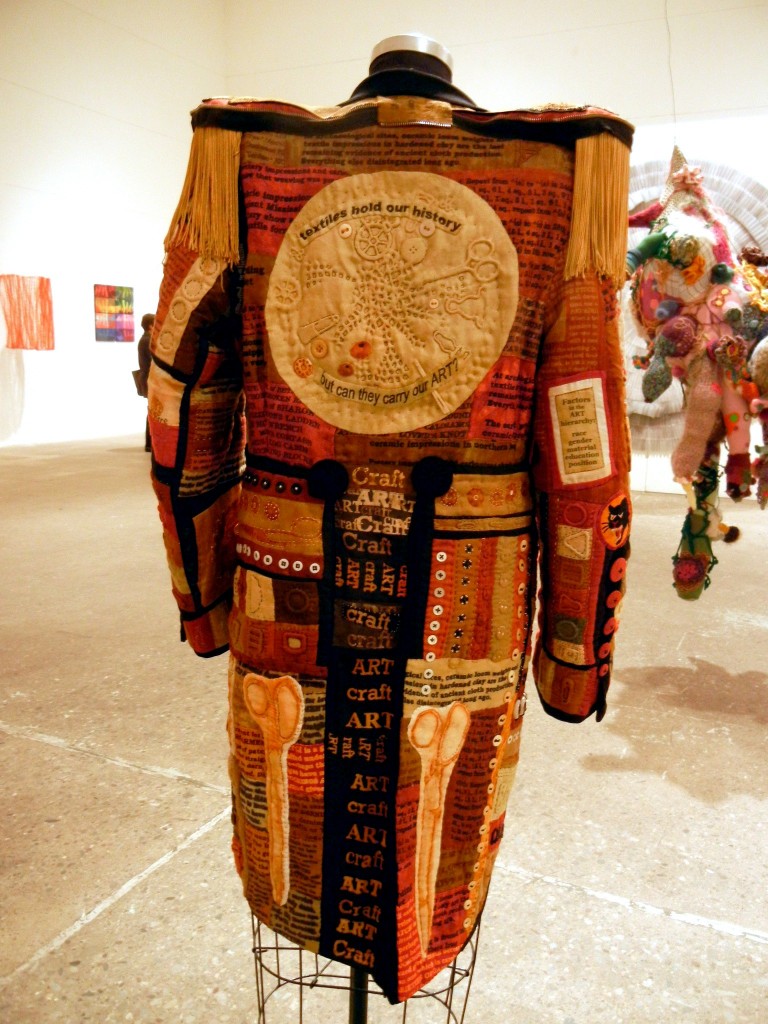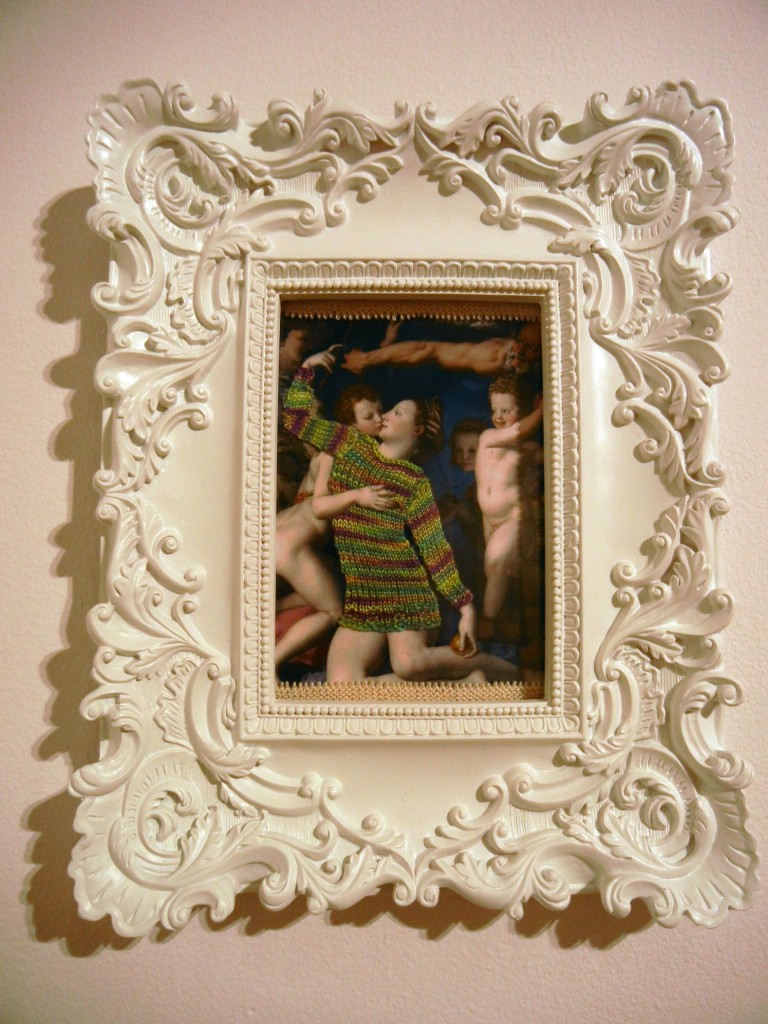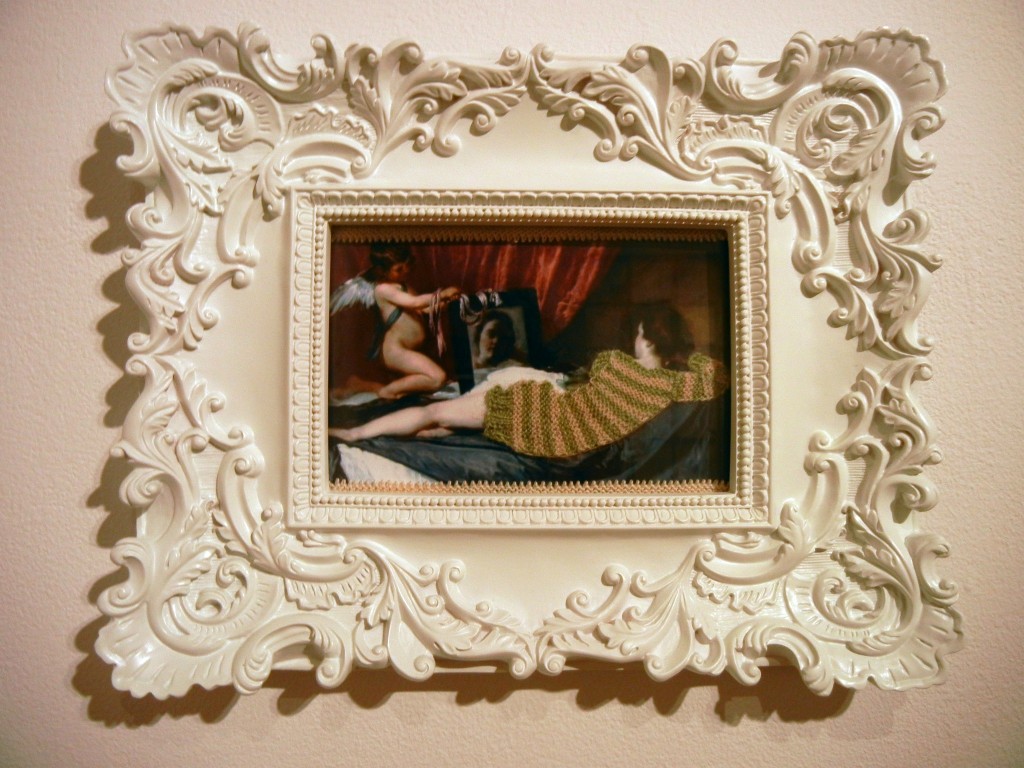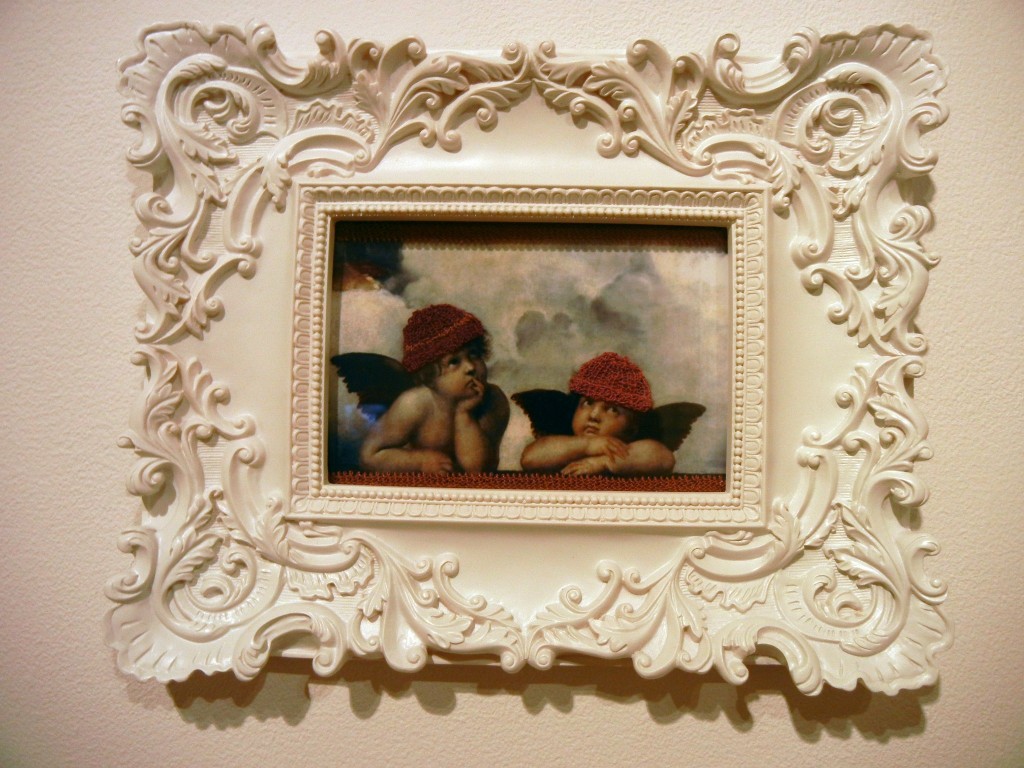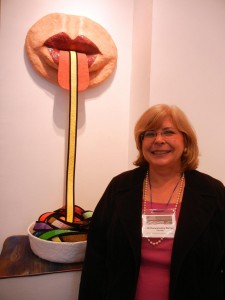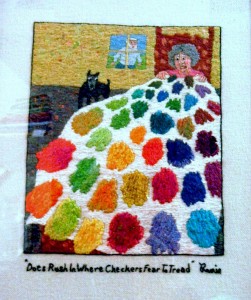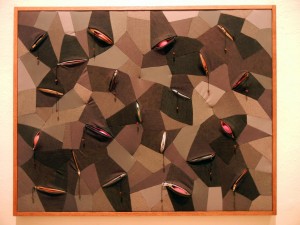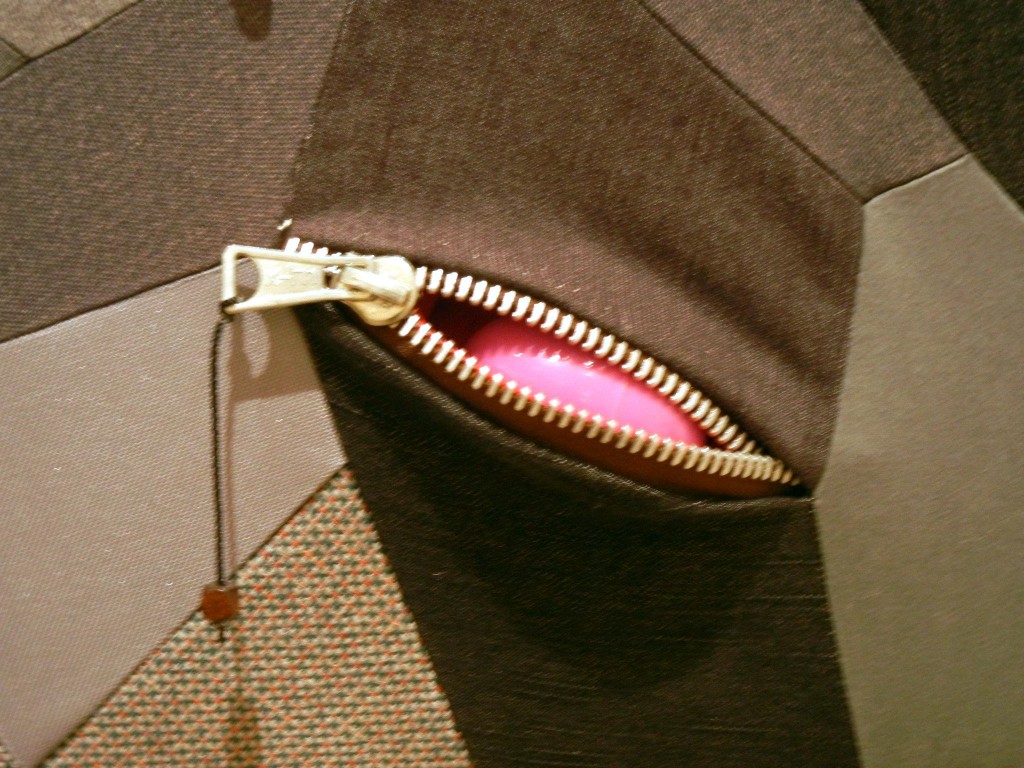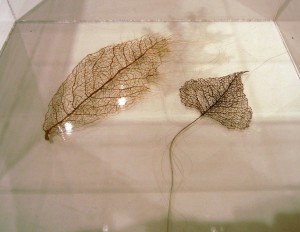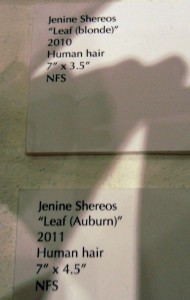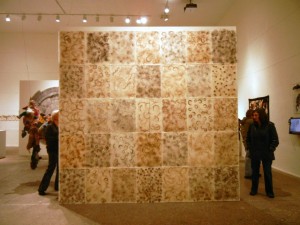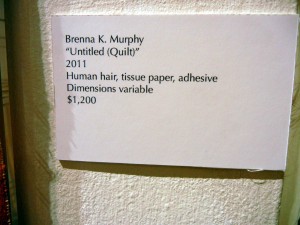My immodest alter ego calls it Recycled “Art.”
Here’s the thing: I just can’t throw away colorful, foil-lined packaging–the kind that holds a crease. So colorful and sturdy. So easy to cut and sew through. Pressing is just pinching—no ironing, unless the packaging is really wrinkly (which can be a good thing).
So besides the clear Rubbermaid tubs of fat quarters, and the drawers of wool, linen, upholstery-weight cottons and dress goods, I’ve now got bins of coffee bags–the kind that fold down, boxes of tea bag envelopes like Stash and Constant Comment, plus sacks of dog food bags for large backgrounds, Alka Seltzer and energy drink packets, and even thinner packaging if the graphics rock. My friends save their empty bags for me. They know about my ReUse series (see it on my website gallery here). Yup, every so often I return to my stash of trash to make quilts. I could probably devote the rest of my quilting to using this medium…
The first one I made is on the wall of our just-renovated kitchen. Grease and dust? No prob, just sponge it off.
Another one is in our archway, between a gate and our front door. Silt and dirt from the city streets
are equally easy to wipe away.
Here are 2010’s and 2011’s ReUse series pieces, donated to the Quilt Alliance for their fundraising auctions:
The latest entry for the Quilt Alliance was three-dimensional:
I’m excited to say that one of my best friends–and suppliers of used coffee bags–won the auction bid on this Coffee House. So, for Christmas this year, I made a little sign: Emmetts’ to go over the Coffee House oval, and glossy photo of their beloved English Springer– hopefully in scale!–to personalize their new piece. I’ll add a photo of the new piece when it’s available, but in the meantime, you get the point!
The newest addition to my ReUse series is this little sample for a class I’ll teach for the Pomegranate Guild in Philadelphia next October. Notice it’s a simplification of Tahrire Square, featuring the Middle East hamsa, a good luck motif that wards off the evil eye. I’m also taking the opportunity to reuse bottle caps and vintage buttons. Not only that, my go-to background and backing is craft felt that is made from recycled plastic bottles. Once again, trash into treasure.
So….after you’ve got your serious work done, and your deadlines met, why not play hooky with a stash of trash? Here are my top tips:
- Use small amounts of glue stick to hold appliques in place.
- Use small amounts of cellophane tape to hold patches together, but be sure you are not stitching through the tape.
- Use a size 90 needle in the machine, 50 or 60 weight thread, and larger stitches: you don’t want to perforate the foil-lined packaging so much that it tears.
- Perforations are there to stay, so forget about ripping out. Just cut and restitch. Or throw the unit away–it’s just trash.
- When your “quilt top” is done, lay it over a larger piece of felt in a coordinating or contrast color: this will show as your edging, and also provide the thin, soft filler. No pins or tape necessary. Quilt simply, and not too densely, working from the center outward.
- Lay the quilted piece on another piece of felt, the same size as before. Quilt around the edges, adding a strip at the top for a hanging sleeve, and catching its top edge as you machine-stitch through all the layers.
- Trim the felt slightly larger than the quilt top all around, using pinking shears or your rotary cutting supplies. Hand-tack the bottom edge of the sleeve in place.
These are just tips. There’s only one rule for making Recycled Art with a stash of trash: HAVE FUN! Please leave a comment. What do YOU recycle into ART?


